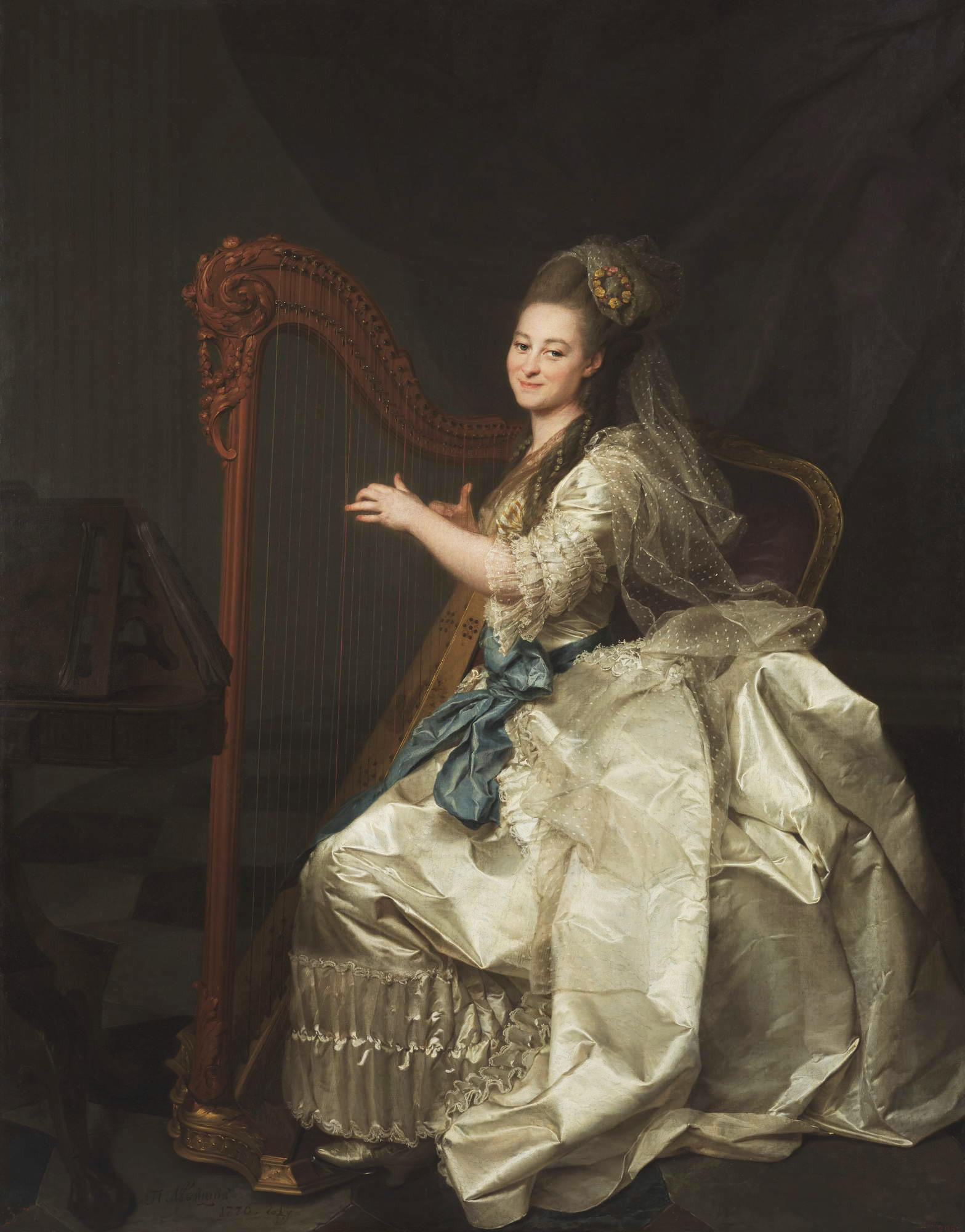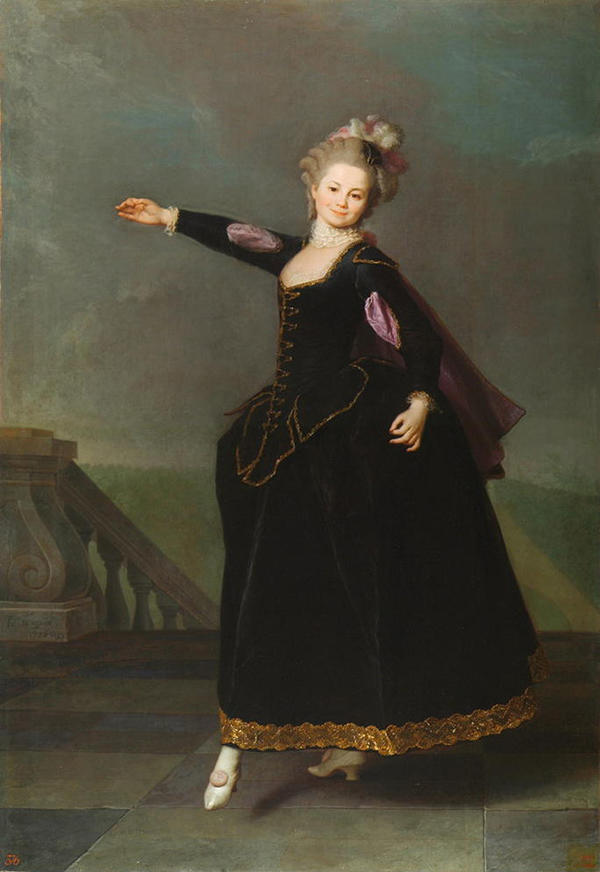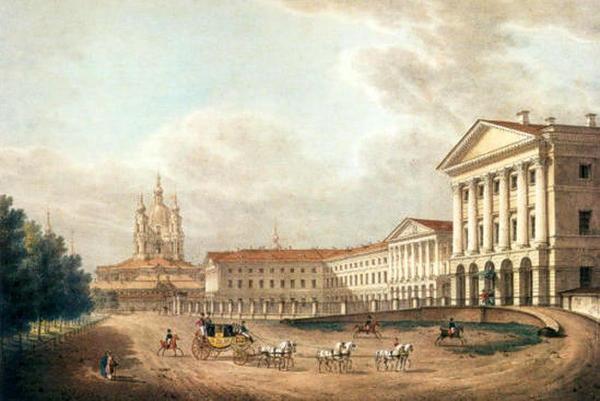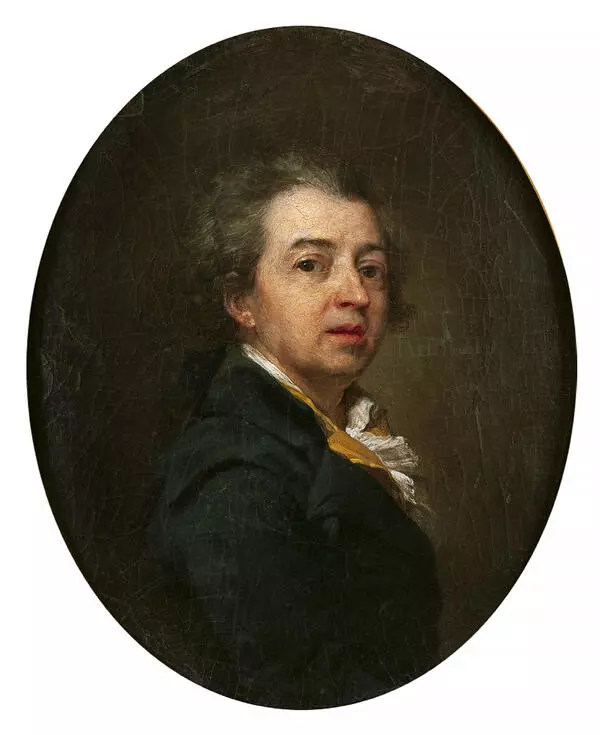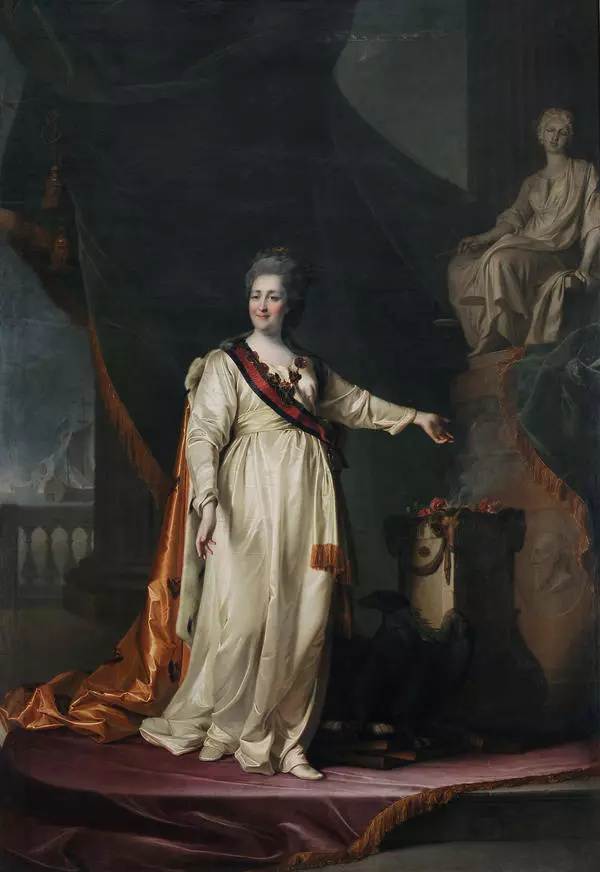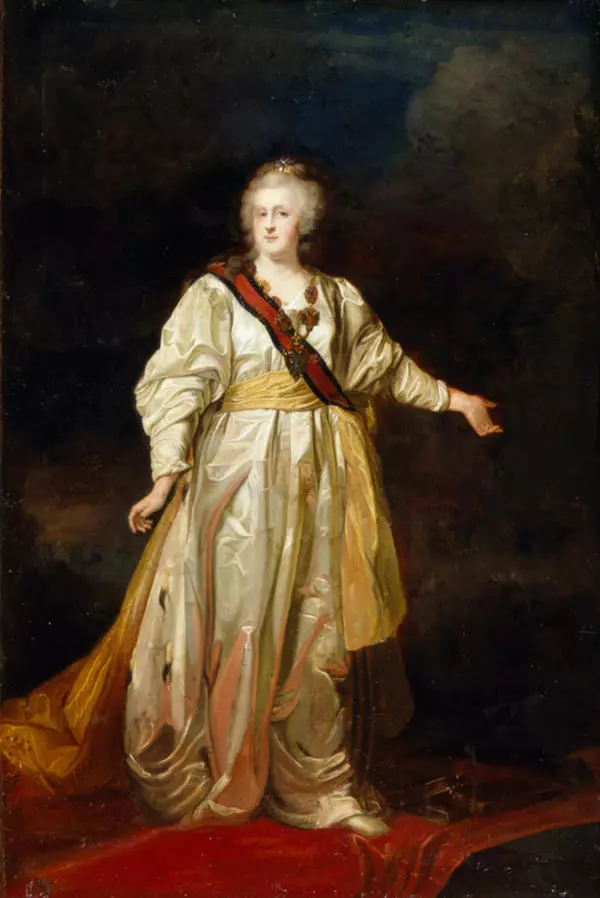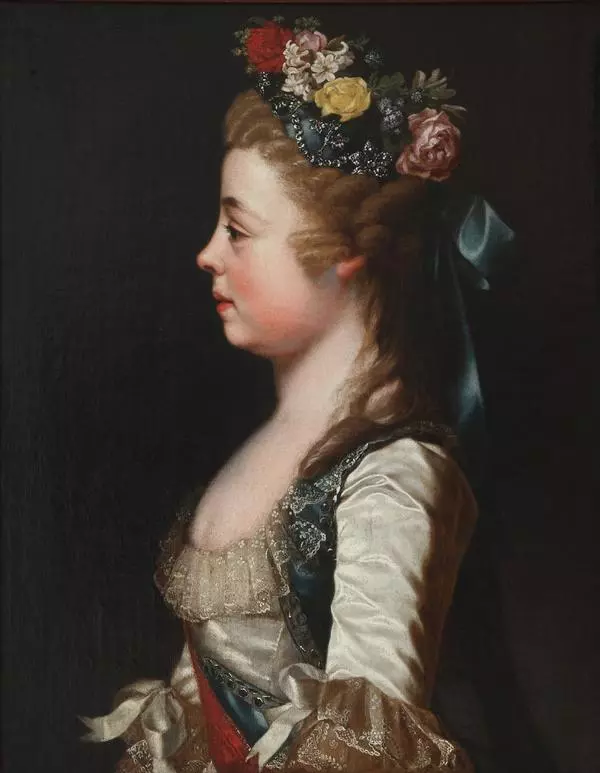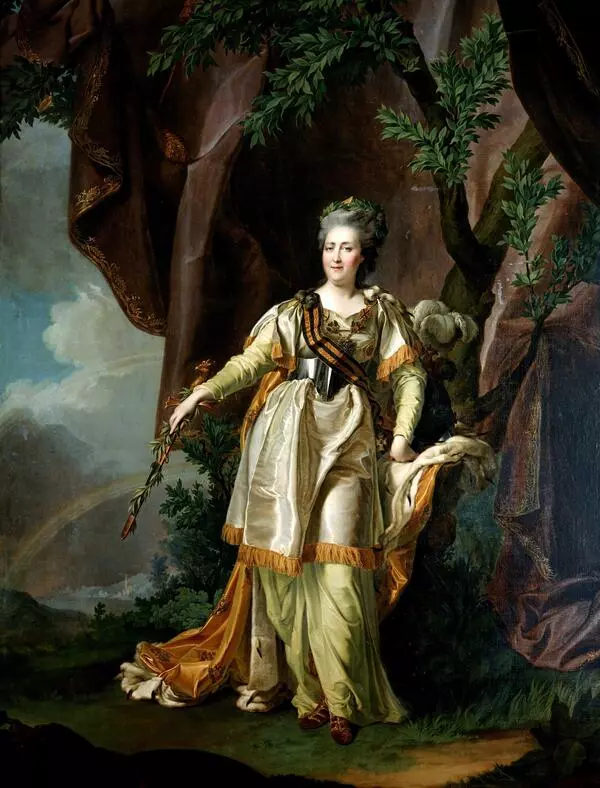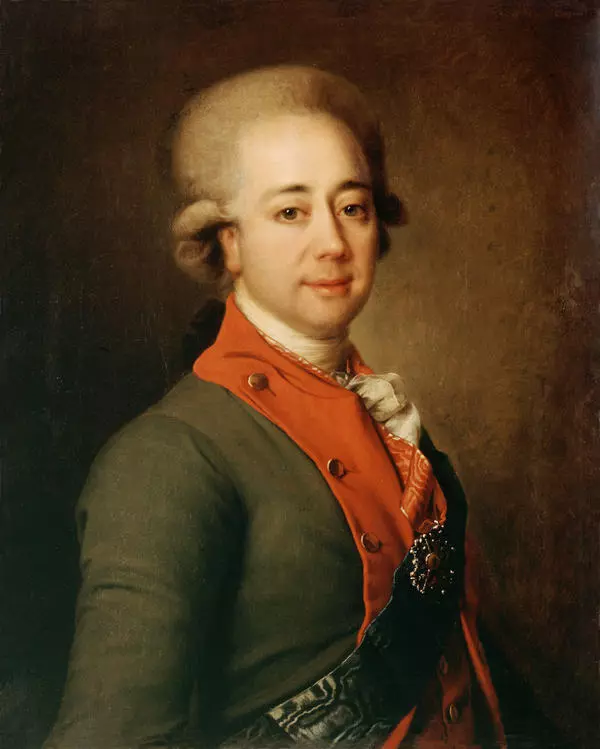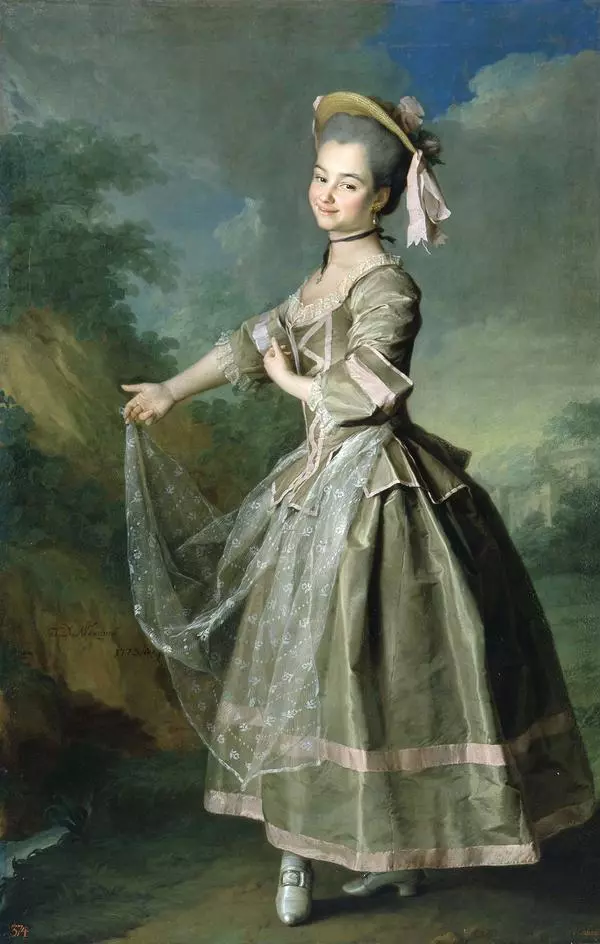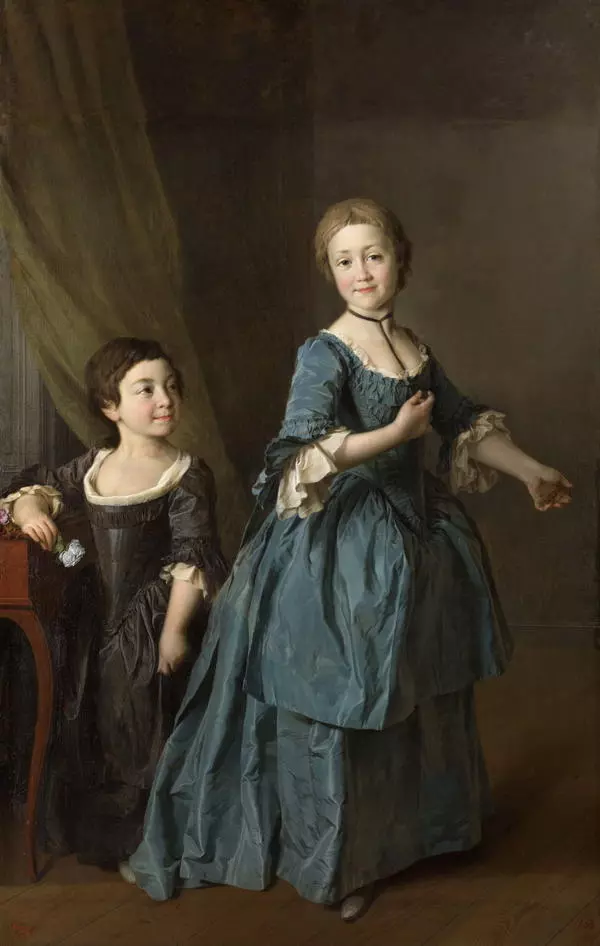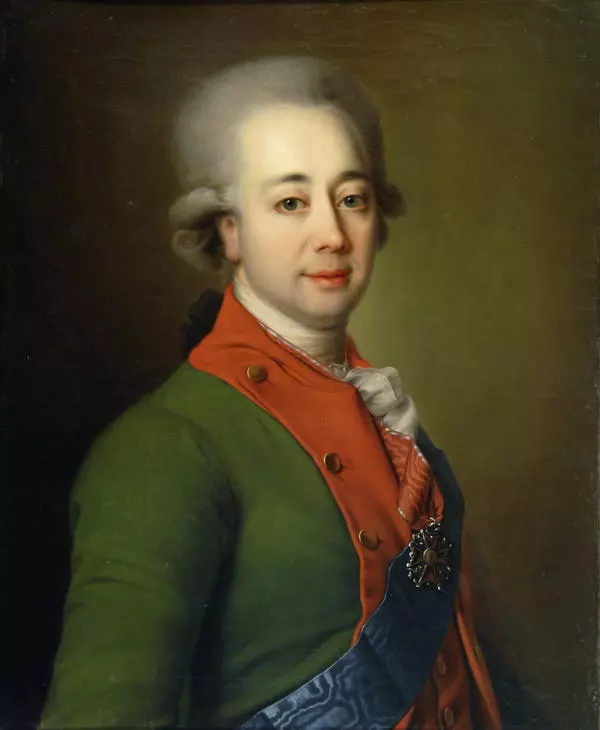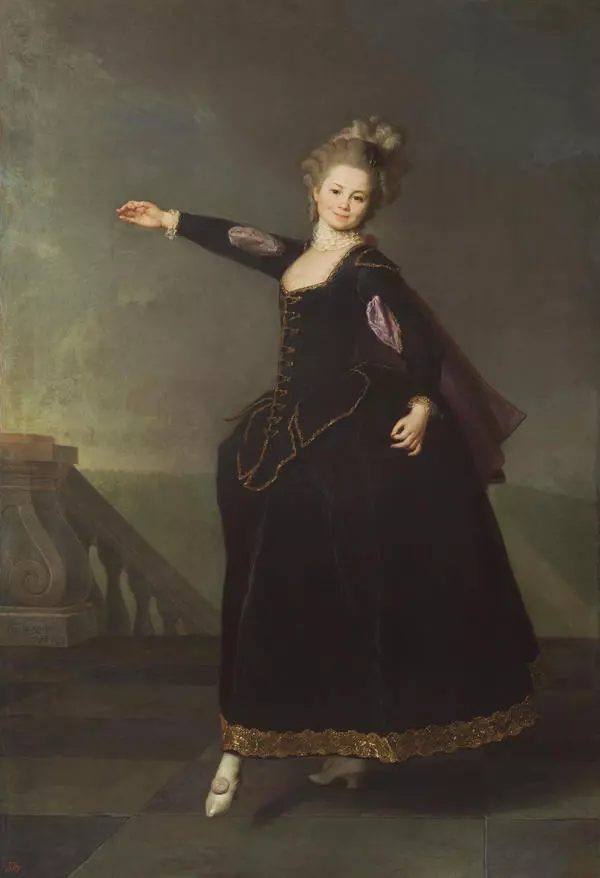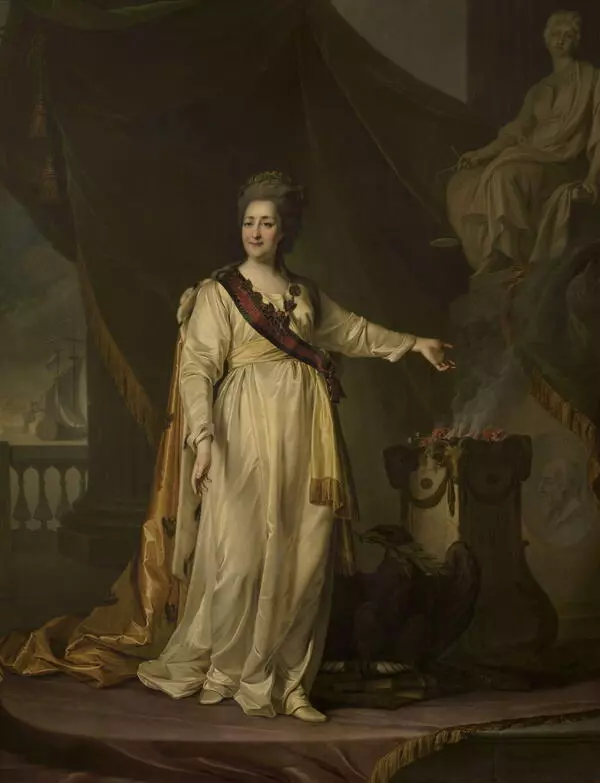In the seventies of the 18th century, artist Dmitry Levitsky painted the best students of the Smolny Institute of Noble Maidens. A series of portraits was ordered by Catherine II: the institute was her favorite project, and she treated many pupils with maternal tenderness.
Portrait of G.I. Alymova
Creation period
1776
Dimensions
183x142,5 cm
Technique
Oil on canvas
Collection
Exhibition
17
Open in app#1
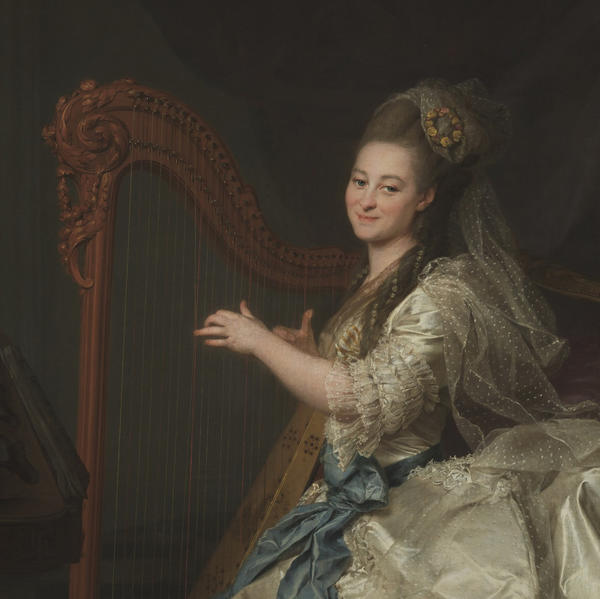
Dmitry Levitsky
Portrait of G.I. Alymova
#2
#3
In 1776, Levitsky completed the cycle with a triptych consisting of portraits of the first graduates of the Smolny — Ekaterina Molchanova, Natalya Borshchova and Glafira Alymova. The author intended to place the image of Borshchova in the center, and he painted two other girls in symmetrical poses to place their portraits on the sides of the triptych.
#4
Triptych consisting of portraits of the first graduates of the Smolny — Ekaterina Molchanova, Natalya Borshchova and Glafira Alymova.
#5
Glafira Alymova had many talents, but her music aptitude was outstanding. Therefore, Levitsky portrayed her in the role of the Allegory of Music, while he presented Borshchova as the Allegory of Dance, and Molchanova — as the Allegory of Science.
#6
The portrait shows Alymova — the first Russian woman harpist — playing a gilded harp. The girl wears a white silk dress. White was the color of the senior smolyanki of the fourth age, from 15 to 18 years. Silk dresses were given out to students only on holidays; on weekdays they wore simple woolen dresses.
Glafira’s dress is more than elegant. It is made in the style of polonaise — the upper skirt is raised, the hem of the lower one is adorned with frills, and on the bodice there are lush bows. The coiffure is decorated with strings of large pearls and flowers. Perhaps the refined image is connected to the fact that already then the girl was patronized by Ivan Betskoy, the trustee of the institute.
#7
Thanks to her cheerful character, intellect and beauty, Alymova was the favorite of both classmates and the empress, who affectionately called her “Alymushka”. And Betskoy, despite the great age difference, had the most tender feelings for her and took an active part in the fate of the smolyanka. After graduating from Smolny, he became her guardian and took her to his house.
#8
The girl graduated with first value gold medal and cipher of Catherine II — the distinction of the court maid of honor. Her further career was successful: under Pavel 1 Alymova became a state lady, it was the highest female post at the court. She received the prestigious Order of St. Catherine (Small Cross).
#9
Stepan Galaktionov (1779–1854). The Smolny Institute. Lithography. 1823
#10
The Smolny Institute existed from 1764 to 1919. Russia’s first women educational institution became a reflection of the Catherine Enlightenment era: the sovereign hoped that educated girls would be able to renew the environment in their families and surroundings, to soften the cruel morals of the society and to create a new breed of people.
The Smolny’s students were prepared for secular and court life: they were taught sciences, foreign languages, etiquette, dancing, singing and playing musical instruments. The schooling went on for twelve years, the girls' parents gave a receipt that they would not pick them up until graduation.
#11
State Russian Museum
read morehide
00:00
00:00
1x
Portrait of G.I. Alymova
Creation period
1776
Dimensions
183x142,5 cm
Technique
Oil on canvas
Collection
Exhibition
17
Open in app
Share
